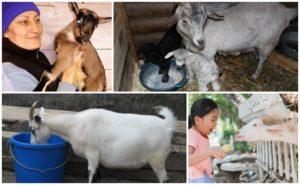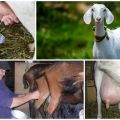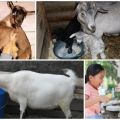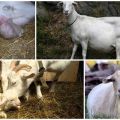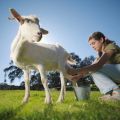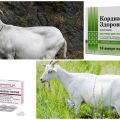If the goat is not covered by a goat, will it give milk and is it worth starting
Novice breeders often ask themselves the question: if the goat for some reason is not covered, will there be milk? Lactation of animals is a natural process, which means that for the appearance of milk, the goat must lamb. But when cattle breeding and goat maintenance are not included in the plans, farmers are considering alternative ways to artificially stimulate lactation.
Can a goat give milk without a goat?
In order for the cattle to produce milk in good volumes, it is recommended to cover the goat every year. Before mating, to replenish the nutritional deficiency, the goat is started - the frequency is reduced or milkings are stopped altogether. After lambing, milking is resumed and the amount of milk gradually increases.
If a previously lambing and milked goat is not re-coated in time, lactation may persist for a missed year. Milk yield is gradually decreasing and may come to naught over time. In rare cases, a goat can give milk without a goat for several years in a row, but this does not have the best effect on the health of the animal.
Sometimes breeders bring a young goat and, at the age of 6 to 12 months, are surprised to find the appearance of "girl's" milk. Early lactation is more common in dairy breeds due to hormonal imbalances. To prevent the development of mastitis, it is necessary to monitor the condition of the cattle, if necessary, milk, but not as often as during normal lactation.
Cases where a goat produces sufficient milk without covering and lambing are considered exceptional. After milking, milk yield may persist, but will be inferior in volume to natural lactation.
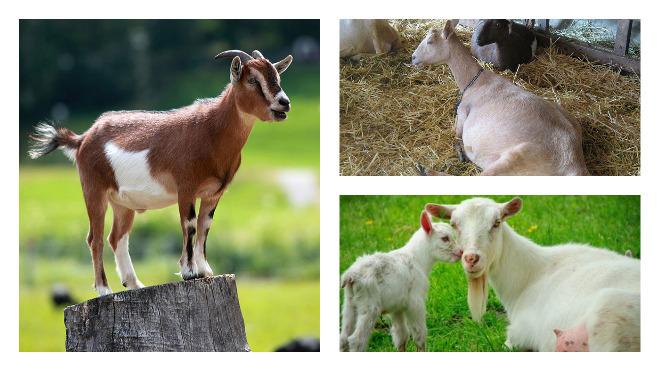
Basic rules for milk
They often start after the first lambing, but you can milk an uncovered goat. Actions must be correct and orderly.
Milking rules:
- Provide a complete diet. The menu includes fresh juicy vegetables, boiled potatoes, grass or silage, vitamin supplements.
- Prepare the animal for milking. In order for the goat to get milk, and the cattle does not resist the process, it is necessary to stroke, lightly massage the udder with fat cream or petroleum jelly three times a day.
- Stimulate lactation. For milk production, it is recommended to squeeze the nipples without causing pain to the animal. Gradually begin to imitate milking.
- Observe regularity and timelines. The procedures are carried out at the same time every day, increasing the frequency with the appearance of milk up to 5 times a day.
You can milk the cow goat yourself, but the amount of milk will be less than after lambing. A competent approach to the maintenance of goats and the milking process will allow you to receive milk regularly, without disturbing the natural cycles of the animal.
